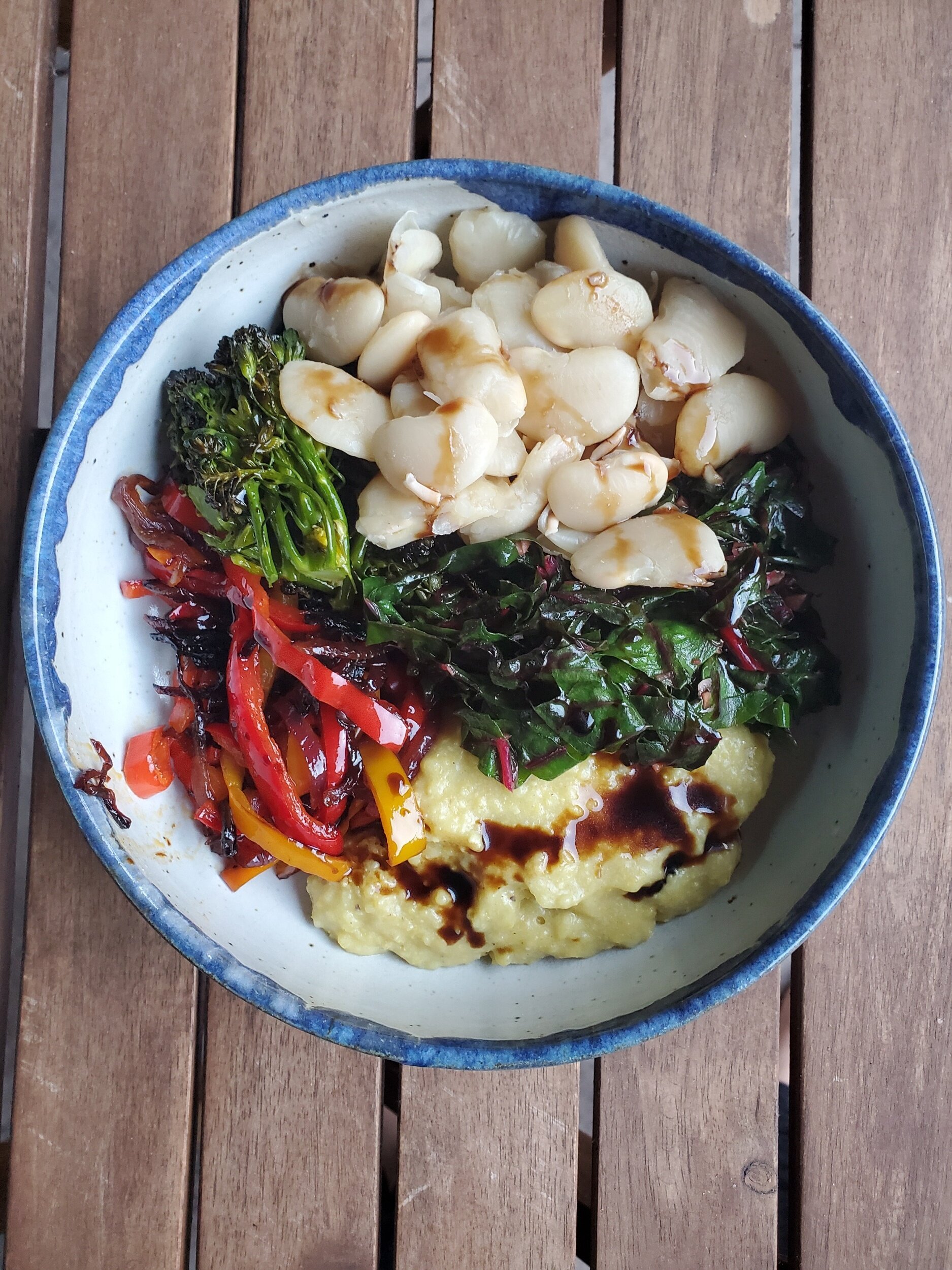This meal came out of wanting to use up leftovers and is especially easy to throw together if you’ve already cooked a batch of roasted brussels sprouts. We put together the pesto with arugula because we had some from a previous meal and wanted a fresh pesto. Many different greens or herbs could be substituted to good effect so if you don’t have arugula on hand, feel free to use the herbs/greens that you do have. We used the almond pulp because it was left-over from making almond milk. Feel free to use any nuts you have around; cashews, walnuts, or pine nuts would go well in the pesto. The brussels sprouts give this pasta dish a lovely filling feel while the tomatoes have a nice fresh burst when you bite into them. We love freshly roasted red peppers, but we also love to use roasted red peppers from a jar. Either would be a good choice.
Serves: 4
Time: 1 hour
Ingredients
1 batch roasted brussels sprouts
1 pint cherry tomatoes
1 lb pasta (gluten-free option, vegan-option)
2 red peppers
For the pesto:
1 bunch of arugula
1/3 cup almond pulp
3 cloves garlic
3 tbsp olive oil
3 tbsp nutritional yeast
1/2 tsp salt
generous squeeze of lemon
Pre-heat the oven to 375 F.
If you are roasting the red pepper in the broiler, that can be done before the vegetables go into the oven. If you are roasting on the stovetop, you can roast while the veggies are cooking. There are many ways to roast a red pepper. If you have a gas stove, you can place the pepper directly on the burner, turn the burner on and cook, flipping with tongs until all the sides are charred. If you don’t have a gas stove, it can be done in the broiler. Move a shelf to the top of the oven and turn on the broiler. Place the red peppers under the coils of the broiler and allow to cook about 6 minutes before rotating the peppers. The skins should char. Remove the peppers from the oven once the skins are charred on all sides (about 24 minutes). Either way you cook the peppers, once they are charred on all sides, quickly place them in a bowl and cover with lid (this makes them easier to peel). Set the bowl aside.
Roast the brussels sprouts according to the instructions. While these are cooking, boil salty water (should be as salty as the ocean) and cook the pasta according to instructions on the box.
Put the cherry tomatoes on a sheet pan drizzle with olive oil and sprinkle with salt. Bake for 10 minutes until the skins pop open and get a little wrinkly.
Remove the roasted pepper from the covered bowl and remove the skin over the sink, rinsing off the char. Remove the seeds and stems. Cut the roasted pepper into strips.
To make the pesto, add all the pesto ingredients in the food processor and blend until smooth. If you need it to be thinner in order to process, you can add 1-2 tbsp of the pasta water.
Toss the prepared ingredients together, serve, and enjoy!


































